This text course is an edited transcript of a ReSound webinar on AudiologyOnline.
Learning Outcomes
After this course participants will be able to:
- Describe the technological advances of ReSound ENZO 3D
- Explain how Binaural Directionality III provides benefits for on- and off-axis listening for users of super power hearing instruments
- Determine which features and fitting options may be most advantageous for individual patient needs
Introduction
In today's course, we are going to highlight the technological advances of ReSound ENZO 3D. Our goal is for the super power user (i.e., those with severe to profound hearing losses) to enjoy the same clarity as the user with mild-to-moderate hearing loss. We want to make sure that they have control of their devices and access to support that is always within reach, through the use of ReSound Assist (our remote online service that was introduced with LiNX 3D). Additionally, connectivity is very important for this patient group. With their hearing aids acting like wireless stereo headphones, they will be able to stream phone calls, audio, and anything from their Apple devices (e.g., iPhone, iPad, iPod Touch). Using the Phone Clip Plus accessory, they will be able to stream audio from any other kind of Bluetooth-enabled device, such as those using Android and other mobile operating systems.
Currently, the ENZO 3D is the world's only super power instrument with Made for iPhone technology. We are bringing the super power instrument segment forward with the ENZO 3D, which is our third generation in this realm (previously, the ENZO had Made for iPhone technology). We are the only super power instrument with remote fine tuning abilities, bringing those capabilities with LiNX 3D into the super power realm. We also are continuing the Smart Hearing Alliance. ReSound and Cochlear Corporation have a bimodal hearing solution that capitalizes on the technology advances of made-for-iPhone. With the N7 and a hearing aid fitted on the contralateral side, you may now stream Made for iPhone signals to both devices in a bimodal fitting.
Patients with severe-to-profound hearing losses comprise a much different group statistically than individuals with mild-to-moderately severe hearing losses. For example, most people with mild-to-moderately severe hearing loss tend to be older. Perhaps at one point in their life they had normal hearing, but gradually lost their hearing as time went on. The severe-to-profound group is much more diverse. For example, 50% of super power users today are between the ages of 18 to 65 years; less than 40% are above 65 years of age. That is a very different demographic, compared to the mild-to-moderate population in which the majority is over 65 years of age. Furthermore, since so many of them are at different stages in their lives, they are going to need support in a wider variety of environments. For example, a child in school or a high-school graduate in college will have different needs than someone who is working, or those who are retired. They may have different hearing challenges and needs to get through their daily lives. It is critical to acknowledge the diversity of this group as we develop super power technology.
Clarity in Any Environment
Based on current research (Jespersen, Kirkwood, & Groth, 2017), we have data to help quantify the improvement in hearing that patients experience using the ENZO 3D as compared to other devices. One study compared the ENZO 3D with super power against competitor devices on the market that use a different kind of directionality processing. Clients reported 60% better clarity of the sounds around them using the ENZO 3D. Furthermore, another study found that users of the ENZO 3D experienced 60% better speech understanding in noise with Binaural Directionality III, compared to competitor devices in an omnidirectional setting. While it is true that the omnidirectional setting provides a lot of benefits for sound quality (i.e., you can hear all around you because nothing is being attenuated by a directional response), that's not always the best scenario when you are trying to listen in noise. Binaural Directionality III provides the benefits of sound quality, along with the directional benefits that a user will need when they're in a difficult listening situation, like speech in noise.
Surround Sound by ReSound
New products by ReSound are based on audiology principles and research. Currently, there are many new technological advances that can be incorporated into hearing aids. However, at the end of the day, the only thing that matters is the impact technology has on the needs of our patients. For example, a patient doesn't typically pursue obtaining a hearing aid simply to have connectivity to their phone. They get a hearing aid to benefit their overall hearing health. We want to make sure that our audiology focus is strong, because that's the primary reason that patients are seeking hearing help from us.
First and foremost, meeting the needs of our severe-to-profound patients begins with excellent hearing aid signal processing. Surround Sound by ReSound is our sound processing strategy that gives exceptional speech understanding, and a better sense of where sounds are coming from. Binaural Directionality III is a new core feature in Surround Sound by ReSound and is critical for individuals who rely heavily on amplification for communication. ReSound ENZO 3D provides practitioners the best features, while catering to gain, output, SNR improvement and comfort.
Although we do incorporate new features, there are also many features that have carried over from generation to generation such as DFS Ultra (now DFS Ultra II) and Noise Tracker II. Spatial Sense was added with LiNX2 and ENZO2. These features are tested, validated, and updated over time.
Challenges Facing Super Power Patients
Some of the challenges facing super power patients include:
- Lack of clarity: Because of difficulties hearing high frequency sounds, users can experience a lack of clarity. Patients often indicate that they're able to get enough loudness for lower pitches or lower frequencies, but not so much for the high frequencies. This may be due to different factors, one of which includes the inability of the hearing aid receiver to meet those high frequency thresholds. Another possible reason is due to patient characteristics, such as dead regions or loss of neural connectivity in those regions after a long-standing hearing loss.
- Effortful listening: Having to strain to listen is difficult and wears on a person throughout their life, especially if they're not adequately fitted. We want to make sure that we keep that in mind when we develop new technology.
- Situational awareness: According to a MarkeTrak study that looked at how important situational awareness was to users of super power hearing aids, 45% of these users reported that they are very concerned about being able to localize sound around them, and to understand where noises come from.
- Traditional technology historically requires trade-offs to deliver maximum gain: For example, sometimes there have been lags in the technology for the super power hearing aid segment, compared to the top-tier segment. The time difference between when a company comes out with a super power product as compared to their flagship product can be a couple years. At ReSound, we are trying to close that gap with ENZO 3D by making the launch of the super power product as close as possible to the launch of the LiNX 3D product that fits a wider range of hearing losses.
Our Philosophy
At ReSound, our philosophy is to consider the real-world listening needs of our users. We try to provide studies and statistics and data to support our products and technology, but at the end of the day, your patient is wearing hearing aids because they provide benefit in their real world listening situations. To that end, we want to deliver the most natural listening experience possible.
Additionally, we want to consider the entire human auditory system (i.e., the acoustic effects of the shape and location of the patient's ears on the body, as well as the binaural processing in the brain). The brain is an amazing auditory processor. There is no duplicating the intricacies and the complexity of what happens to a sound as it travels up the auditory pathway to the cortex. Hearing aids exist to help that sound at one point in its journey to be loud enough and to have a high integrity signal that is sent on to the brain. When that signal gets to the brain, ideally the brain has the tools and cues it needs to be able to locate the origin of the sound (whether it came from the front, from behind, etc.) and to discern desired sounds in a noisy environment. There are all kinds of things that the brain does automatically that can't be touched by hearing aid technology. At ReSound, we want to develop technology that supports what the brain already does.
Possible Outcomes
Binaural Directionality III is the third generation of the microphone mode control strategy that meets the goal of providing a natural hearing experience. It steers the microphone configuration of two hearing instruments to support binaural sound processing by the brain. It is the only truly binaural strategy taking advantage of scientifically proven listening strategies, incorporating acoustic effects and auditory spatial attention strategies.
When Binaural Directionality III goes to a bilateral omnidirectional response with Spatial Sense, it will provide pinna restoration cues and binaural compression adjustments. In this way, sounds arriving from the front or from the side are not artificially processed in a way that's going to be hard for the brain to understand. Furthermore, it will provide a bilateral directional response when it makes more sense to do so. For example, if you're at a cafe with a friend and you want to hear what they're saying to you from across the table, and you don't care about the conversation behind you, the optimal response is directional to the front. This response will be provided automatically when that condition is encountered.
An asymmetric directional response is important for reducing listening effort in noisy environments, by providing situational awareness. This may seem a little counterintuitive. An asymmetric directional response has directionality on one side and omnidirectionality on the other. In a noisy environment where the signal is not purely just in front of you, there are usually other speakers that are moving around you. Picture a cocktail party or a restaurant where you want to hear the waiter coming up to the side. You not only have to be focused on the conversation you're having, but you also want to be monitoring the situation through that omnidirectional ear to make sure that you can discern new speakers when they start to talk to you. The asymmetric directional response helps in those situations and also reduces listening effort, because you are not feeling like you could potentially be missing out on things around you that you know you can't hear. For example, if you're sitting at a restaurant table, the server comes up to take your order. Perhaps you didn't see them approaching. It can be very disconcerting if all of a sudden their lips are moving, but you didn't hear them say anything, because you didn't have any of that situational awareness.
Binaural Directionality
Binaural Directionality II worked by providing all four of those different responses: bilateral omnidirectional, bilateral directional and asymmetric directional, with the directionality either on the right or the left side, depending on where the speakers were in the environment. Binaural Directionality III continues in this tradition, but has optimized the fine tuning of the polar response.
On the left side of Figure 1 is a schematic of Binaural Directionality II. It's currently in an asymmetric directional response, such that the left ear is directional and the right ear is omnidirectional. That white area is an illustration of the head shadow that would occur with Binaural Directionality II - for example, if a server in a restaurant approaches the patient and begins to speak into their left ear. In that head shadow, they might not have heard the server to the optimal degree as compared to a situation where that polar response could be manipulated such that more of it is audible. That's what you see in the Binaural Directionality III concept on the right. You see the optimization of the polar response, not only for the omnidirectional (as you can see less of that white shaded area), but also in the directional area too, which has also been fine tuned to provide a more optimal response. This occurs not only in the asymmetric directional conditions, but also in the omnidirectional and the directional conditions. In other words, we have found ways to make the response of our microphones better for these kinds of situations. As evidenced by the ENZO 3D trials, patients are saying that it is a much more natural sound quality and that they feel immersed in and surrounded by the listening environment.
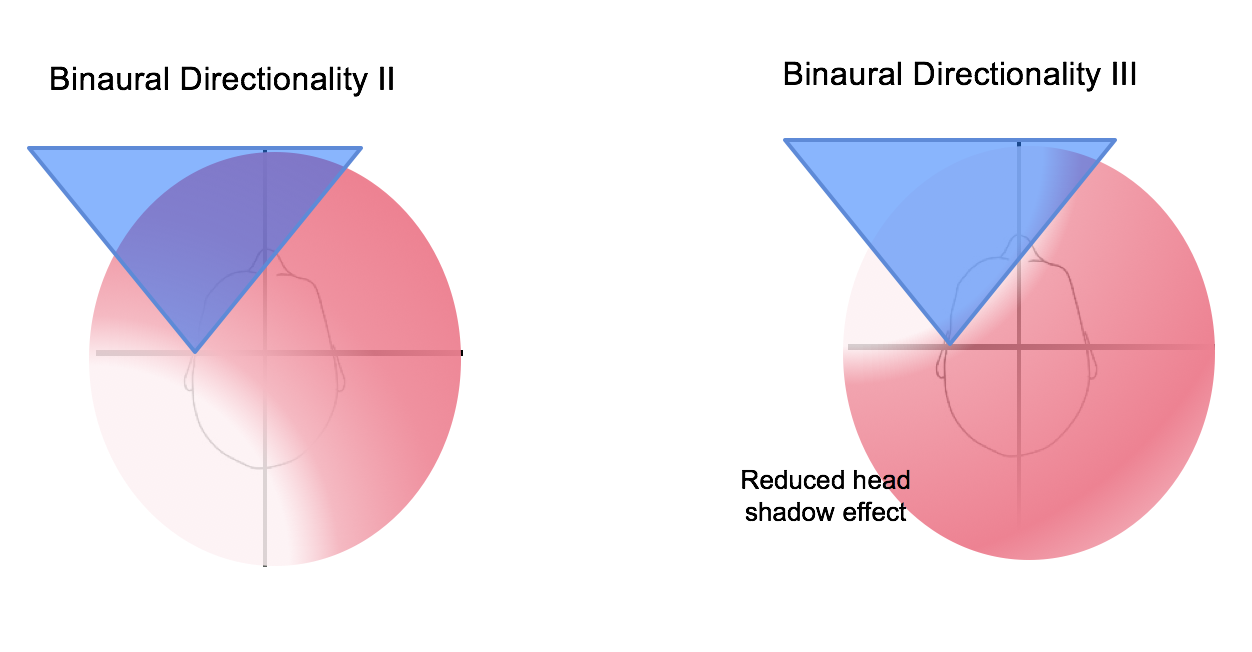
Figure 1. Binaural Directionality II vs. III.
Binaural Directionality III
In lab settings, directional benefit is traditionally tested with the speaker in front and the noise behind. This type of set up provides a maximal response and shows the benefits of directionality versus omnidirectionality. Realistically, however, no patient lives in such a controlled environment. As such, that type of evaluation may not directly correlate to what the patient experiences in their daily life. In a sound booth, the speech and the noise are spatially separated; in real life, that's not necessarily the case. For example, walking into a store, you may be having a conversation with a friend that's on the side of you, while another person behind them is speaking. The additional person would be considered the noise source, because you are not interested in what that other person is saying. In that case, speech and noise are not spatially separated, and it becomes a lot more difficult to determine what the speaker of interest is saying. We don't see that when test in a sound booth. We need to keep these differences in mind when we present data that was obtained in a lab.
Directional: Benefit or Deficit?
At ReSound, we conduct research that not only shows benefits in the lab, but also what's happening with patients outside of the lab. We do a wide variety of speaker setups in order to be able to quantify that. The traditional speaker setup (with the speech in front and the noise in back) will show a directional benefit, or improved signal-to-noise ration (SNR), when the patient is facing that speaker. However, when the patient is not facing the speaker (Figure 2) and is instead facing the noise, a directional microphone will provide a directional deficit. In this situation, the person is hearing the noise much more than the speech, compared to even what they would have been hearing in an omnidirectional response. This is never what we would want to have happen with our patients.
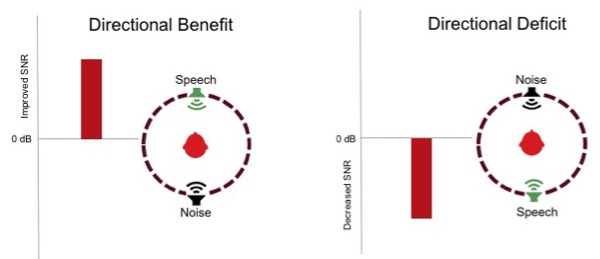
Figure 2. Directional SNR comparisons to omnidirectional.
One comment that we often hear is that a person's natural tendency is to turn their head and look at the speaker they want to listen to. That is true about 68% of the time, according to research conducted at Walter Reed Army Medical Center (Cord, Surr, Walden, & Dittberner, 2011). Why aren't people turning their heads? Think about all the things that you do in your day: you're chopping vegetables at the kitchen counter, you're listening to your spouse tell you about their day, or you're walking along the sidewalk with a friend. You can't always look directly at the person that you want to listen to, but these are the moments when a lot of important conversations can take place. We don't always plan a face-to-face, sit-down meeting for the important information in our lives. This is where it makes sense to provide that audibility.
In the Walter Reed study, they also found that a significant portion of active listening time (about 32%), where people are listening to a speaker that is not directly in front. For instance, the speaker may be off to the left or right, speech may be coming from many different directions, or the speaker or speakers may be moving. Hearing aids have a difficult time in predicting which speaker the listener wants to focus on. They have no way of knowing if something important is being said by a speaker off to the left or to the right. The only thing that the hearing aids can do is steer directionality to that loudest speech source, which is not always the one you want to hear. In that case, especially if it's a beam forming directionality or a highly directional hearing aid, the response that the user gets is not always appropriate for what they would choose.
With Binaural Directionality III, we want to make it possible for the user to choose what to listen to. To do that, we provide an array of options that allow for situational awareness, while at the same time providing directional benefit in noise. As I mentioned, we have omnidirectional on both sides (Figure 3). This will be automatically activated in Binaural Directionality III when the patient is in a quiet environment, or an environment with speech only. Sounds that are less than 65 dB SPL will be considered quiet. If I'm walking through a library, I want to know if there's a book falling next to me. I want to hear my child as we walk down the sidewalk. These are situations where Binaural Directionality III omnidirectional response on both sides will help.
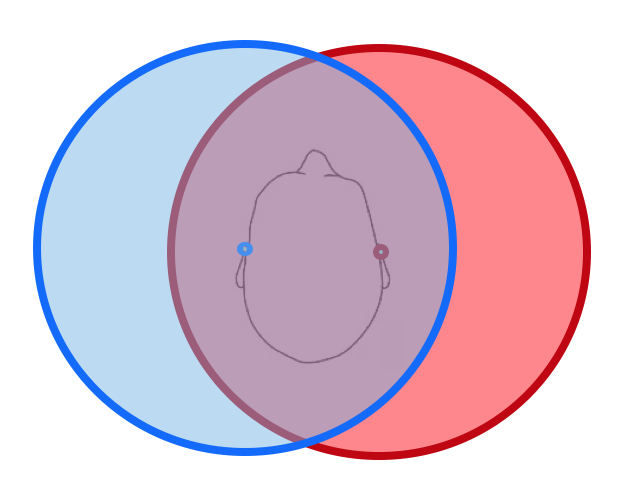
Figure 3. Binaural Directionality III will provide omnidirectional in both ears in quiet environments, or in environments with speech in quiet.
There will be times when I'm in a noisy environment and I want to hear something that is going on, but I want to also reduce the amount of noise in the background. That's when asymmetric directional response will activate (Figure 4). When the noise level is above 65 dB SPL and there is a dominant speaker on the left, for example, it's going to change to omnidirectional on the left with directional on the right, to be able to discern the speech on the left and reduce some of the noise off to the right rear quadrant. Conversely, if the speaker moves over to the right side, it's going to do the opposite, so that we don't end up listening in a tunnel of auditory awareness. That way, we get some auditory awareness without necessarily having to turn our heads, which people do not do 32% of the time.
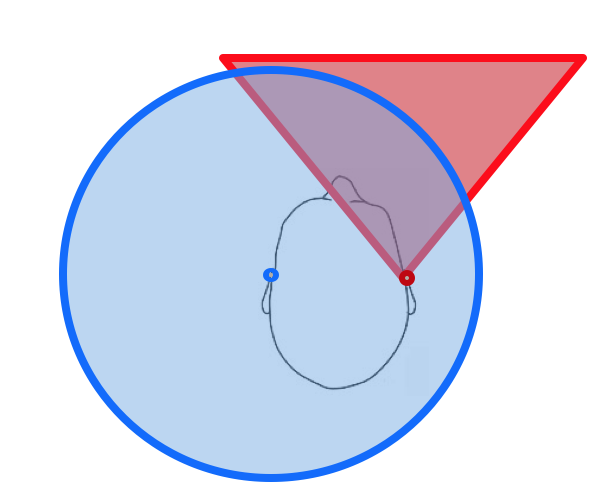
Figure 4. Asymmetric directional response.
In a more traditional situation, it makes sense to have directional to the front, when the dominant speaker is in the front and there's noise behind the person. In these scenarios, Binaural Directionality III will put the listener into a bilateral directional response (Figure 5). This will maximize the SNR in the most difficult listening situations.
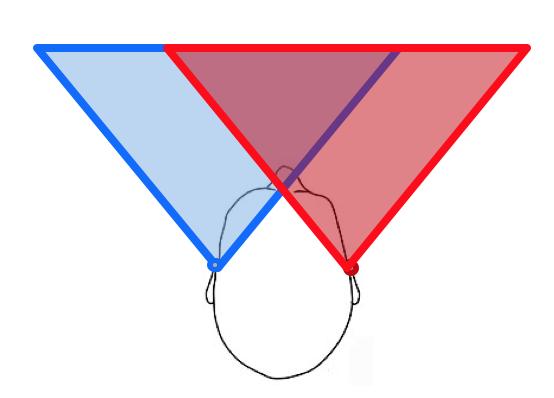
Figure 5. Bilateral directional response.
In the bilateral omnidirectional condition, Spatial Sense will automatically be activated, just like it was Binaural Directionality II. Spatial Sense is the marriage of two features into one: pinna restoration (which provides better localization abilities for front to back and in the vertical plane) and binaural compression (which aids in the preservation of interaural level difference cues and helps with horizontal localization abilities).
How it Works
Binaural Directionality III including Spatial Sense is a binaural feature, whereby information is exchanged wirelessly ear-to-ear between the devices. In this way, we can achieve things like optimized gain correction for binaural compression. In other words, sounds coming from the right side are not given too much gain on the opposite side, just because they are being head shadowed and arriving at that hearing aid at a lower intensity level. We want to maintain the interaural level difference cues that the brain needs to be able to localize the origin of sounds.
When Spatial Sense is achieved, participants in our trials have described having a better feeling of true spatialization. As I mentioned with Binaural Directionality III, people felt like they were better able to discern where a sound was coming from more naturally, rather than hearing it all in their head. If you're listening in a purely omnidirectional mode with no pinna restoration and no binaural compression, it can sometimes feel that sounds are in your head, and that there is no separation between the sounds around you and the time that they arrive. Whereas if you have binaural compression, directional mix which provides interaural time difference cues and pinna restoration, it will feel like a more natural surround sound listening experience.
Spatial Sense ENZO 3D Study
First, we wanted to make sure that our Spatial Sense in ENZO 3D was providing the right amount of pinna restoration cues that would be able to make it easier to determine if a sound is coming from in front or in back. We performed a study to verify the efficacy of Pinna Restoration within ReSound Spatial Sense, using the ENZO 3D. We modeled this new study after the study that was done with LiNX 3D, showing how well our concept can work compared to other concepts on the market today. Participants in the study all had severe to profound sensorineural hearing loss. They were put into a situation where the speaker in front was presenting a sound occasionally, and the speaker in back was also presenting a sound. They needed to determine whether each sound or speech signal came from the front or the back. This was done under two conditions: aided in standard omnidirectional and aided with Spatial Sense active.
In an omnidirectional response alone, without Spatial Sense or any kind of pinna restoration, participants were confused on average about 50% of the time. They had to provide one of two responses (either front or back), and the correct percentage was very close to what would be considered pure chance. Participants did nearly as bad as just guessing without being able to hear anything at all. With pinna restoration turned on via Spatial Sense, they were able to significantly reduce their front-to-back confusion. If you saw this study result with LiNX 3D, you may remember that the effect of pinna restoration to reduce those front-to-back confusions for LiNX 3D was much more significant because those users were mild-to-moderately severe hearing impaired. In contrast, this population, having severe-to-profound hearing loss, had some difficulties that were to be expected, based on a loss of high frequency audibility. Their results, while significant, were not as dramatic as they would have been with a milder hearing loss group. In people with mild-to-moderate loss, a lot of the high frequency cues can not only be made audible, but they can be usable if there are no dead regions.
It is noteworthy to mention that there was a wide range of variability. Some users scored well above average, and also noticed a difference when they were out in their daily lives using Spatial Sense as compared to omni. Furthermore, there was never any subject in the ENZO 3D or the LiNX 3D study that demonstrated worse performance for Spatial Sense than for omnidirectionality.
Effect of Binaural Directionality III: Clinical Research
Jespersen, Kirkwood, and Groth conducted clinical research in 2017 that examined the effect of Binaural Directionality III compared to two premium hearing aids using binaural beam forming directional processing. The participants' hearing losses were in that ENZO 3D fitting range, ranging from moderate to profound. There were multiple speech signals presented simultaneously from speakers at different locations around the participants. One of these speech signals was a target sentence. The subject was asked to listen for and identify a specific sentence, like "Dagmar went to the store" or "Dagmar bought a cookie." Even though there were other speakers that were saying things, the participants were only supposed to identify the target sentence and repeat it back.
We looked at the performance of the participants as determined by the correct identification of the target speech sentence. When the talker was in front of the subject and the patient was fitted with ENZO 3D versus two other hearing aids on the market that use beam forming directionality, their speech intelligibility was not significantly different (Figure 6). This is to be expected, because when you're looking at the speaker, you're getting that directional benefit, regardless of whether you are in a beam forming directional response, or whether you're in the bilateral directional response that Binaural Directionality III would provide.
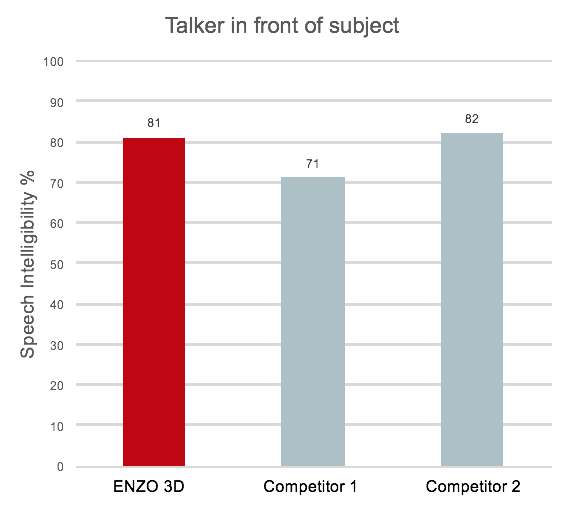
Figure 6. Research outcome: talker in front of subject.
Now, watch what happens when we moved the target speaker to different areas around the patient. When the target speaker was coming from the side, the patient wearing the ENZO 3D had much better speech intelligibility as compared to those wearing competitor products with binaural beam formers (Figure 7). While beam formers are good at reducing the SNR to the non-look direction (the rear and sides), they are not able to provide the necessary amount of audibility when the speaker is not in the front, because the null of the directional response is in those azimuths. Binaural Directionality III would allow the directional pattern to move to omnidirectional on the left and directional on the right, which provides more audibility for the back left speaker as compared to a hearing aid with beamforming.
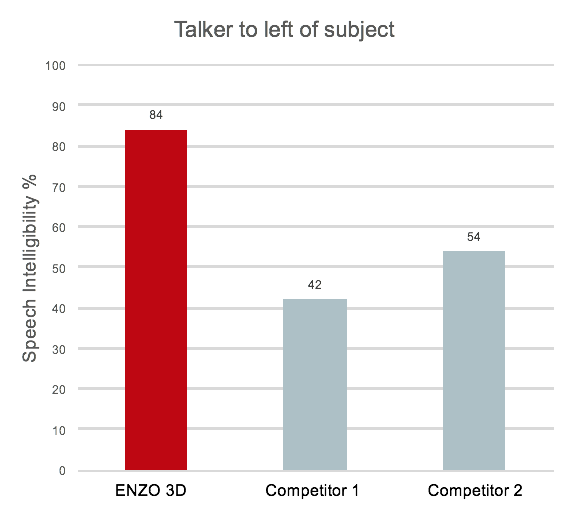
Figure 7. Research outcome: talker to left of subject.
Moving the target speech to the rear had the same effect (Figure 8). There was more audibility because of the ability of that binaural pattern to switch, depending on the location of the speaker. Severe-to-profound subjects wearing ENZO 3D hearing aids were able to achieve 77% speech intelligibility in this challenging scenario, which is quite promising.
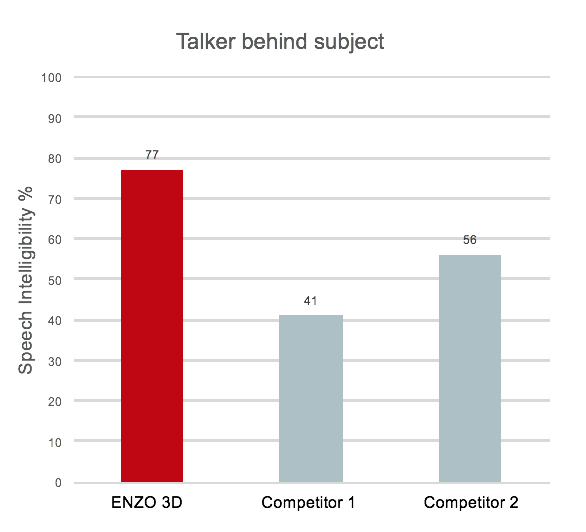
Figure 8. Research outcome: talker behind subject.
The following conclusions were drawn from this laboratory test:
- Binaural Directionality III in ENZO 3D provided an equally good speech intelligibility as the beamformers in both Competitors 1 and 2, when the target speaker is in front of the test subject.
- Binaural Directionality III in ENZO 3D provided significantly better speech intelligibility than the beamformers in Competitors 1 and 2, when the target speaker moved "off-axis" (i.e., to the side and behind the test subject).
- When the target speaker was not in front of the listener, Binaural Directionality III provided an enormous advantage compared to the hearing aids with binaural beamforming.
At the end, there is no deficit provided by Binaural Directionality III. It is going to provide a lot more speech intelligibility for super power users, regardless of where the speaker is in relation to the patient.
Feedback Control
Feedback control is important for the super power hearing aid population. These users demand a lot more gain out of their devices than the LiNX 3D user. A unique, soft-ended ear hook that decreases mechanical vibration has been implemented into the 98 model, which uses battery size 675. For the smaller 88 model, using a size 13 battery, there is a metal ear hook which increases the stability above what you would get with a LiNX 3D 88, which has a plastic ear hook.
DFS Ultra II is ReSound's feedback suppression system. It has been tested with the severe-to-profound population and has been shown to deliver the same usable gain expectations as with the mild-to-moderate population. With DFS Ultra turned on, the patient will receive up to 15 dB more usable gain to use in their everyday life, versus if it was turned off. They would be getting feedback if they had it off; but with it on, they get an extra boost of 15 dB gain, if that's how you want to adjust the patient's settings.
Our feedback suppression system also has built-in Whistle Control, which can be compared to an emergency brake. If a hearing aid is providing 40 to 50 dB of gain at a high frequency, and you quickly bring a phone up to your ear, it is always going to emit feedback regardless of what kind of phase cancellation or filter DFS system you have in the hearing aid. Whistle Control automatically kicks in when this occurs, to temporarily provide a decreased notch in the high frequencies to eliminate that feedback spike. Once the feedback spike is gone, Whistle Control turns itself off automatically. It does this without reducing the gain below the baseline of what it was going to be before. You're not losing any gain; you're just losing the feedback spike.
Tested against some other popular super power hearing instruments, we looked at the peak coupler gain versus the actual gain that could be measured. In a test box, we set up three super power hearing instruments (the ENZO 3D and two competitors) onto a coupler. However, with any kind of BTE device, if you put it on a test box coupler and you increase the gain to the ceiling, it probably won't feedback, because there's no pathway for feedback. Therefore, we introduced a small hole in the tubing so that we would have an acoustic leak. Next, we looked at the spec sheets to see the peak gain of each instrument (as shown in the black columns in Figure 9). With the ENZO 3D, the spec sheet indicated 83 dB SPL full-on gain measurement. Competitor A's spec sheet showed a peak coupler gain of 78, and Competitor B indicated 82.
When we tested the hearing aids, the ENZO 3D got up to 82 dB. At that point, feedback was inevitable. The maximum feedback-free gain with the feedback cancellation feature activated is shown in the gray columns. Although Competitors A and B were able to provide 65 to 70 dB of usable gain, it wasn't nearly as much as the 82 that is capable with the ENZO 3D. I'm not saying that we will be fitting patients with 83 dB of gain, but it's nice to know that the DFS Ultra II system is robust enough to be able to handle these kinds of demands.

Figure 9. DFS Ultra II vs. two competitors.
MFi: Made for iPhone
ReSound ENZO 3D includes our industry-leading connectivity with Apple iOS devices. This is our third generation of super power hearing aids that includes this Made for iPhone capability (including ENZO, ENZO2 and ENZO 3D). Additionally, we released a new app with LiNX 3D, called the Smart 3D app, which is compatible with the ReSound ENZO 3D. This app provides many new features via a user-friendly interface. As with previous ReSound hearing aids, ENZO 3D users have the ability to stream calls and other audio media, directly from their iOS device to their hearing aids, with no intermediary device required. The user is not required to wear anything around the neck, and nothing pinned to their lapel. It's compatible with iPhone 5 and later, with iPad Air and later, and many versions of iPod Touch.
Effect of MFi Direct Audio Streaming: Clinical Research
Listening on the phone can be difficult for anyone, even with normal hearing. It is especially difficult for people with severe-to-profound hearing loss, because they frequently rely on visual cues during conversation. If you are talking on the phone in the traditional manner, with the phone to your ear, you are not receiving any facial cues or expressions to help you in that conversation. Often, you get into situations where you are not sure what is being said. The super power population needs those visual cues, and benefit greatly from applications such as FaceTime or Skype.
We wanted to see if there were significant communication benefits of direct audio streaming to a user's hearing aids, and if there were similar benefits with video calls. The study was performed in a sound treated room with the test participant placed in the middle of four loudspeakers (Figure 10). These loudspeakers simulated a difficult listening environment by providing constant background noise.
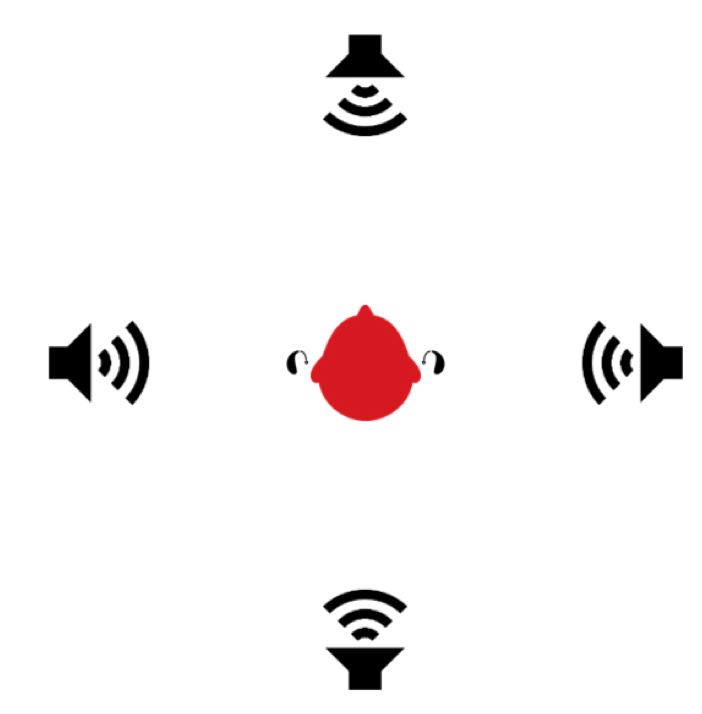
Figure 10. Test set up.
Test speech materials were delivered to the user in the following different ways via a telephone:
- Acoustic phone, unilateral (the iPhone speaker was held to the microphone of one hearing aid).
- MFi audio, unilateral (the call signal streamed from the iPhone to one of the hearing aids worn).
- MFi audiovisual bilateral (the call signal streamed from the iPhone to both hearing aids with visual cues provided via FaceTime).
Results
The results of this test show clear advantage in direct call audio streaming to hearing aids, combined with the use of Facetime, over standard acoustic use of a telephone. As you can see in Figure 11, the participants' results were as follows:
- Acoustic phone, unilateral: Mean percentage correct = 6%
- MFi audio, unilateral: Mean percentage correct = 45%
- MFi audiovisual bilateral: Mean percentage correct = 77%
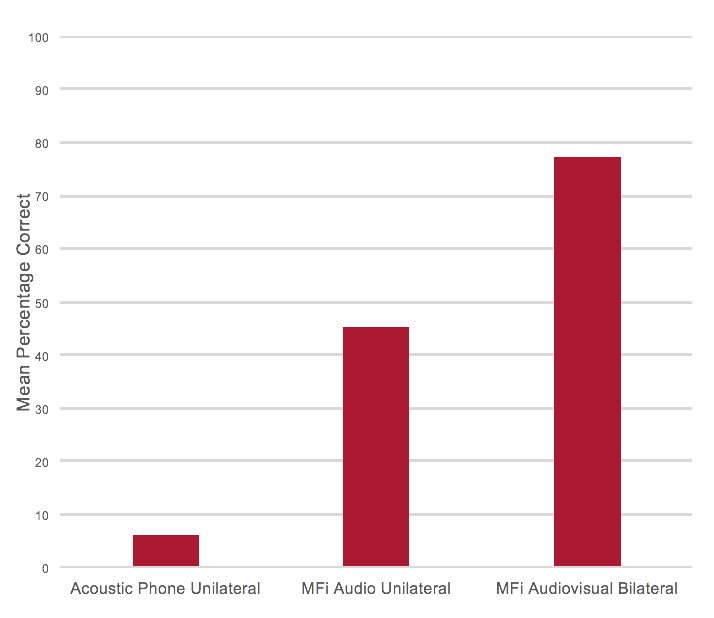
Figure 11. Study results.
As evidenced by this study, there is a clear correlation between degree of hearing loss and increased need for favorable signal-to-noise ratios for successful communication. With the ENZO 3D, those who need the most from their hearing aids can experience significant improvements in phone calls with use of ReSound’s MFi technology.
ReSound ENZO 3D
ReSound ENZO 3D is available in 10 colors, three technology levels (9, 7 and 5) and two power levels:
- The ReSound ENZO 3D ET 88-DWH high-power BTE is for individuals with moderate-to-profound hearing losses and uses a size 13 battery. It is available on the 9, 7 and 5 levels. It is a nice option for someone who doesn't want the full size of the super power hearing instrument, but wants the 73 dB maximum gain. Maximum output is 132 dB SPL. The 88 model is only available in the metal earhook.
- The ReSound ENZO 3D super power ET 98-DW BTE is for individuals with severe-to-profound hearing loss, who need the most gain and output. The 98 model uses a 675 battery and is slightly larger than the 88 model. Maximum gain is 83 dB and maximum output is 141 dB SPL.
The feature set for the ReSound ENZO 3D hearing aids is in the course handout. They are similar to the ReSound LiNX 3D product families. Refer to the ReSound ENZO 3D dispenser brochure for a detailed review of features.
Also with ENZO 3D, the full range of control and support are always within reach through a variety of features:
- Smart Fit Software
- Smart 3D App
- ReSound Assist
- Connectivity
Smart Fit Software
With the introduction of LiNX 3D, Smart Fit software was introduced. Our new version of Smart Fit (v.1.1) accommodates the ENZO 3D family as well. When you download the Smart Fit software, it will appear as only one icon on the top of your Noah screen, and Aventa is still built into that. If you have patients walking in the door with Versos, you can still fit them. Smart Fit will allow you to redirect back to Aventa, so you don't have to remember whether you needed Aventa or Smart Fit to fit the hearing aid that is at hand.
Additionally, when Smart Fit is installed, the Experience level for your machine preferences will default to "First Time User." Also, all fittings will default to a compression mode of wide dynamic range compression (WDRC). The default settings can be changed under Machine Preferences, and future fittings will have the initial fitting settings set accordingly.
Smart 3D App
The Smart 3D app allows for personalization, and for streaming without intermediate devices. This is true also for Android users. You can control the hearing aid with the Smart 3D app directly to the hearing aids on Android. The only thing you can't do with Android is stream audio. If you're watching a movie on your Windows or Samsung phone, you're not going to be able to stream that directly to your hearing aid, unless you have a Phone Clip Plus that will allow you to stream that signal in stereo sound quality.
ReSound Assist
ReSound Assist remote fine tuning is a first-and-only for high power and super power hearing aids. ReSound Assist is standard for all ReSound ENZO 3D devices. This allows for fully adjustable remote fine tuning directly through the fitting software. When you make remote fine tuning changes to your patient's hearing aids, they will automatically be applied into the fitting software if your patient chooses to accept and download them. This allows the same kind of flexibility and control that the LiNX 3D user has, but in a super power device. This level of assistance is critical for individuals with high demands on amplification, because they depend on their hearing aids to a large degree. Someone who is not able to make it into the clinic for any number of reasons (e.g., on vacation, busy work schedule, needs someone to drive them, long distance away) is able to get fine tuning through your services, which is a nice feature to use not only as a selling point, but also to build relationships with clients.
Connectivity
ReSound 2.4 GHz wireless provides cutting edge, easy-to-use technology with high cosmetic appeal. This allows for wireless audio (speech or music) to stream from ReSound wireless accessories or direct from Apple devices, which enhances and expands the patient’s listening experiences. The connectivity is just like listening to wireless stereo headphones. Improving the signal-to-noise ratio for audio signals through our wireless technology is critical for individuals with severe-to-profound hearing losses, as well as individuals with difficulty understanding speech.
Many of our older accessories are backwards compatible, and can be used with the ENZO 3D. For example, you may have a patient who was fitted a long time ago and has a Mini Mic. You can still use that Mini Mic with the ENZO 3D. The Multi Mic and the Micro Mic provide some additional benefits, but if they have a working Mini Mic, they can still use it.
Smart Fit 1.1
Bimodal is Better
ReSound and Cochlear Corporation are two global leaders in pioneering better hearing solutions. The Smart Hearing Alliance is their partnership and commitment to expand solutions for both hearing aids and cochlear implants, well as bimodal options. ReSound is launching ReSound ENZO 3D. Cochlear is launching Cochlear™ Nucleus® 7 Sound Processor. With these products, it will be the world's first-and-only smart bimodal hearing solution. This will include bilateral MFi streaming for compatible devices (i.e., audio will be delivered to both the hearing aid and the cochlear implant). Compatibility with ReSound Wireless accessories will be available as before. This provides significant benefits in difficult listening situations to those who need it most.
Bimodal Fitting Guide
The ReSound Smart Fit fitting software will have a bimodal option, allowing direct access to a Bimodal Fitting Guide and also a bimodal beep tone option. The new Bimodal Fitting Guide provides detailed information about how to fit the contralateral hearing aid, and a bimodal beep tone option. If you are in the Smart Fit software in the user preferences menu, there is now a bimodal toggle switch, and it defaults to the "off" position. If you want to access the Bimodal Fitting Guide and the bimodal fitting options, you can toggle that switch to the "on" position, and restart Smart Fit to receive access (Figure 12).
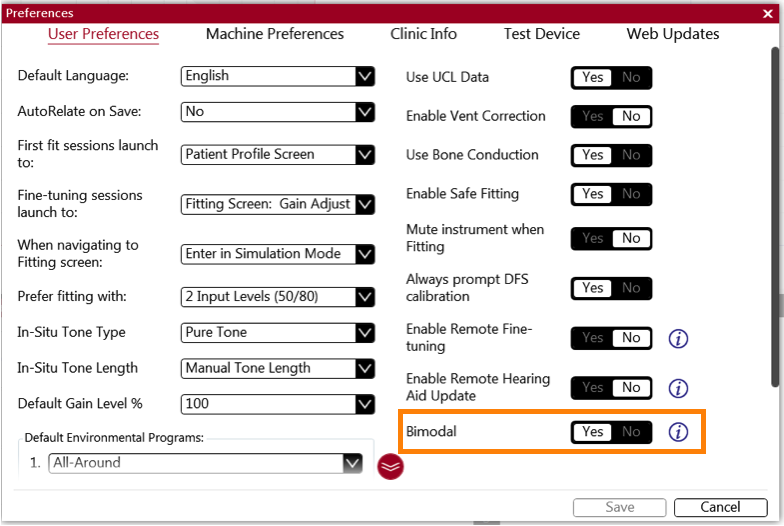
Figure 12. Activating the Bimodal Fitting Guide.
When the ReSound Smart Fit bimodal option is activated, the Bimodal Fitting Guide will appear in the Help pull-down menu (Figure 13). The Nucleus Bimodal Beep Frequency option will also appear in Device Controls. Using the Nucleus Bimodal Beep frequency, you have the ability to set the ReSound hearing aids to have frequency characteristics that are compatible with the Cochlear Nucleus devices, such that the beeps on one side are akin to the beeps on the other.
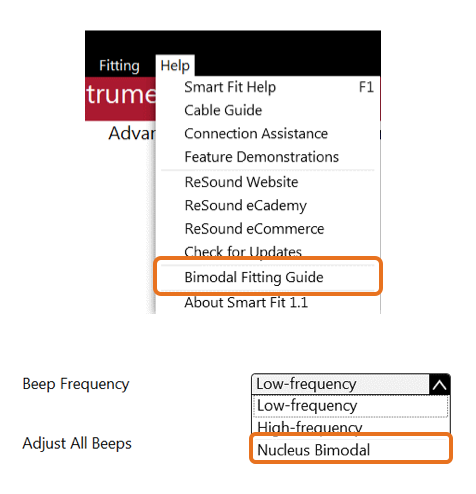
Figure 13. Smart Fit access to Bimodal Fitting Guide and Nucleus Bimodal Beep frequency option.
In our new bimodal fitting guide, we have specific information and recommendations about how to program the hearing aid in a bimodal situation. These have been under development for a very long time, because each and every one of them was validated by Cochlear in Sydney. They did a full test with many bimodal users, and they looked at the ReSound defaults for the contralateral ear. They tried a variety of different settings and for the most part, they found that the ReSound defaults were the best for the bimodal contralateral ear. All recommendations that were gleaned from that research are outlined in the fitting guide. One recommendation included in the guide is to use an NAL-NL2 fitting target, and that the first program should be synchronized soft switching instead of Binaural Directionality III. Clearly, if it's a unilateral fitting, you're not going to have the Binaural Directionality III option. Ultimately, it's just a guide: it's not going to be perfect for every one of your users, but it does provide some extra guidance.
Power and Super Power Options
We have the same kinds of power and super power fitting options that we had with ENZO2. When fitting power and super power hearing aids, some special fine-tuning features become important. ReSound Smart Fit integrates these fitting parameters into this power category of devices. For the purposes of this presentation, we will highlight five features:
- High-output device notification
- Compression Modes: WDRC, Semi-linear, Linear
- Compression Limit Mode
- Low Frequency Boost
- Sound Shaper frequency compression
High-Output Device Notification
When fitting hearing aids that have high output capabilities, Smart Fit will display a notification of the maximum output of the device. In the case of ReSound ENZO 3D, it has a max output of 132 dB SPL. While the high output is needed for the severe hearing loss, caution is needed when adjusting the hearing aid to appropriate settings.
Compression Modes
The compression options available are: linear, semi-linear, and wide dynamic range compression (WDRC). The default mode is determined by patient experience setting. Experienced linear profiles will default to linear compression. All other profiles default to WDRC. You can change those options if you want to test out whether a patient would do better with semi-linear than WDRC, if they are having trouble with distortion, for example. These modes are highly adjustable by ear and by program. Note that the semi-linear option is not available for all products, particularly technology level 5. The course handout inlcudes a summary of the three compression modes, including explanations of each mode, what they look like in the software and for whom they are recommended.
If you change to a linear mode, there are not going to be any differential gain assignments per the input level. It's just going to be one row of gains per frequency, which is what you would expect. The compression ratios are going to be one, because it's linear. This is recommended for previous users of linear amplification who have a strong preference for this type of processing, and users who have been using it for a long time. Semi-linear is recommended for patients who would like more audibility for low input sounds. This is something that WDRC would do, but perhaps they've worn linear for a long time and you want to ease them into that. Semi-linear offers a lower compression ratio than WDRC, and it's going to give you that happy medium.
Compression Limit Mode
When you choose a linear mode, you have the option of choosing soft-peak clipping or hard-peak clipping. Soft is going to be the default, because it's less distorted, but some people do prefer that hard peak clipping. If you're not familiar with Smart Fit, you'll notice that our advanced features are on a slider scale, so that you don't have to use pull-down menus as much to see all your options. You can slide it and see what's available to you.
Low Frequency Boost
Individuals with severe-to-profound hearing losses often want more low frequency gain than prescribed by fitting rationales. To satisfy this patient preference, Low Frequency Boost provides a quick way to increase low-frequency gain with settings of mild, moderate and strong. In other words, the user can get more bass into the hearing aid response. It does the same thing as adjusting the low frequency gain handles. This can enhance audibility, loudness, and fullness of sound quality for these individuals. The setting can be viewed on the response curve, as long as the maximum gain has not been exceeded. It applies to individual programs and is available for all compression modes.
Sound Shaper Frequency Compression
ReSound Sound Shaper is a frequency lowering strategy designed to move higher frequency sounds to lower frequency areas, where audibility is better. The idea behind frequency lowering is that if individuals cannot hear the high-frequency sounds due to the severity of their hearing losses, then it might be more beneficial to hear them at lower frequencies. Sound Shaper is available in three settings: mild, moderate and strong. ReSound has a philosophy not to automatically turn on Sound Shaper, and leave it for the professionals to decide when it is appropriate. As such, the default setting for Sound Shaper is "off."
Conclusion
In summary, at ReSound, our goal is to meet every requirement with the latest signal processing, providing more clarity and understanding in more situations. With DFS Ultra II, we are providing more usable feedback-free gain (up to 82 dB). With the Smart 3D app, we offer your patients personalization options that are unheard of in a super power device. Remote assistance is available with ReSound Assist. With our 2.4 GHz connectivity, your severe-to-profound patients will have improved communication, resulting in a better quality of life, using the first and only made-for-iPhone super power product.
References
Cord, M.T., Surr, R.K., Walden, B.E., & Dittberner, A.B. (2011). Ear asymmetries and asymmetric directional microphone hearing aid fittings. American Journal of Audiology, 20(2), 111-122.
Jespersen, C.T., Kirkwood, B., & Groth, J. (2017). Effect of directional strategy on audibility of sounds in the environment for varying hearing loss severity. ReSound white paper.
Citation
Stender, T. (2017, December). Introducing ReSound ENZO 3D. AudiologyOnline, Article 21471. Retrieved from www.audiologyonline.com


